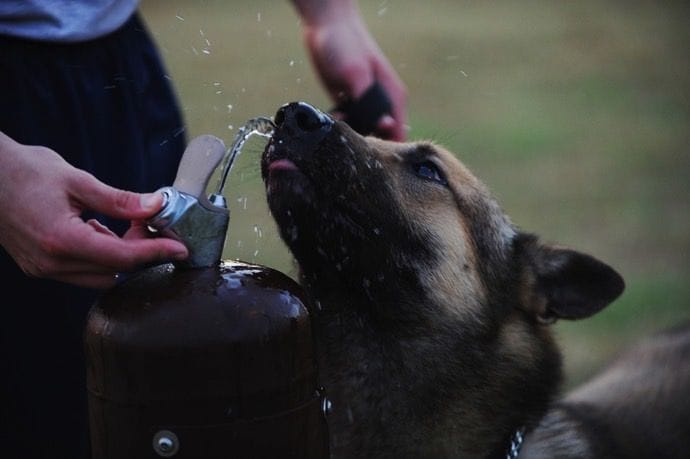
LEFT: What COVID-19's coronavirus looks like under a microscope. RIGHT: What influenza virus looks like. (Images courtesy of CDC)

Per the CDC, hand sanitizer needs to contain at least 60% alcohol. Tito's Handmade Vodka is 40% alcohol, and therefore does not meet the current recommendation of the CDC. Please see attached for more information.

 |
| source: Mercury News |
In polling, 94% of Americans agree that animals raised for food deserve to live free from abuse and cruelty. Yet the majority of the nearly 10 billion land-based animals, plus countless more aquatic animals, farmed for food each year in the U.S. live in unacceptable conditions that do not align with consumers’ stated values.
“Factory farm” is a term commonly used to describe an industrial facility that raises large numbers of farm animals such as pigs, chickens or cows in intensive confinement where their movements are extremely inhibited. Animals are kept in cages or crates, or are crowded together in pens. These types of farms are sometimes referred to as concentrated or confined animal feeding operations (CAFOs).
Laws
While most Americans expect our existing laws to protect farm animals, the reality falls far short. Animals raised for food are among the least-protected animals in our nation.
As you read this, another innocent animal is being abused, neglected or forced to fight. The first step to creating positive change for these animals is recognizing the cruelty that threatens them.
Brush your cat’s teeth at home by following these simple steps:
Chew toys can satisfy your cat’s natural desire to chomp, while making her teeth strong. Gnawing on a chew toy can also help floss your cat’s teeth, massage her gums and scrape away soft tartar.
If your cat suffers from any of the symptoms mentioned below, please see the vet right away:
Bathing Your Cat
With her built-in grooming tools (tongue and teeth), your fastidious feline is well-equipped to tackle her own hair care needs. But if she is very dirty or gets into something sticky or smelly, you may need to give her a bath. Follow these steps to ensure minimal stress and maximum efficiency.
Brushing Your Cat
Brushing your cat not only removes dirt, grease and dead hair from her coat, but it helps to remove skin flakes and stimulates blood circulation, improving the overall condition of her skin. One or two brushings per week will help kitty to keep her healthy glow—and you’ll find that regular sessions are especially beneficial when your cat ages and is no longer able to groom so meticulously on her own.
Skin Problems
The condition of your cat’s skin is an indication of her overall health. When a skin problem occurs, your cat may respond with excessive scratching, chewing and/or licking. A wide range of causes—from external parasites and allergies to seasonal changes and stress, or a combination of these—may be affecting your cat’s skin and should be investigated. Skin problems are one of the most common reasons pet parents seek veterinary care.
Shedding
Shedding is a cat’s natural process of losing dead hair. Indoor cats can shed all year-round. Regularly grooming your cat and vacuuming hair from your house should minimize the inconvenience of shedding. However, if you see bald patches in your cat’s fur or notice a significant loss of hair, the underlying cause may be a health-related problem and should be investigated by a veterinarian.
Healthy Paws
Cats need healthy feet to scratch, climb and achieve their famed acrobatic landings. That’s why it’s important to regularly examine and clean your cat’s paws and make sure they’re wound-free.
Nail Care
Does your kitty disappear when the clippers come out? Do you have to wrap her in a towel to give her a manicure? Follow these steps to help your cat relax while you trim.
Source. ASPCA
To avoid these problems and enjoy the summer season with your pet , here're the tips to keep in mind. Provide plenty of water and...
